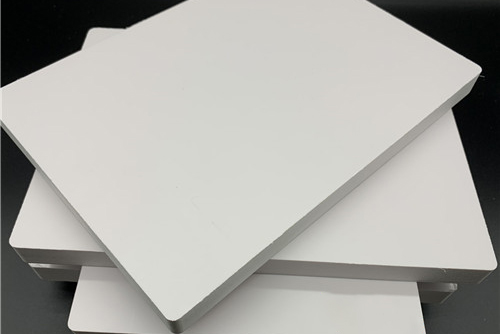PVC foam board, a versatile material used in a wide range of applications, including signage, displays, and model making, presents unique challenges when it comes to storage and transportation. Its lightweight and rigid nature makes it convenient for various purposes, but these same qualities can also make it susceptible to damage if not handled properly.

Challenges in Storage
1. Moisture: One of the primary challenges in storing PVC foam board is moisture. Excessive moisture can cause the board to warp, swell, or delaminate. The PVC foam core is particularly susceptible to moisture damage, as water can penetrate the material and disrupt its cellular structure.
2. Temperature: Extreme temperatures can also affect the dimensional stability of PVC foam board. High temperatures can cause the material to expand and warp, while low temperatures can make it brittle and prone to cracking.
3. UV Exposure: Prolonged exposure to ultraviolet (UV) radiation can cause the PVC foam board's surface to discolor and degrade. This is especially true for boards that are not protected by a UV-resistant laminate or coating.
4. Physical Damage: PVC foam board is relatively rigid, but it can still be damaged by physical forces, such as bending, puncturing, or scratching. Sharp objects, heavy weights, and excessive pressure can all cause damage to the board.
Challenges in Transportation
1. Vibration: During transportation, vibration can cause the board to flex and bend, leading to warping or cracking. This is particularly problematic for larger sheets of PVC foam board.
2. Impact Damage: Impacts from other objects can cause dents, punctures, or tears in the board. This is especially true for unprotected edges.
3. Moisture Exposure: If PVC foam board is not properly protected during transportation, it can be exposed to moisture from rain, snow, or humidity. This can lead to the same problems as mentioned earlier.
Storage and Transportation Tips
To minimize the risks associated with storing and transporting PVC foam board, consider the following tips:
Storage Environment: Store PVC foam board in a cool, dry, and well-ventilated area. Avoid storing it in direct sunlight or in areas with high humidity.
Protection: Protect the boards from physical damage by using edge protectors and wrapping them in protective materials, such as plastic wrap or corrugated cardboard.
Pallets: Use pallets to elevate the boards off the floor and prevent moisture damage from the ground.
Flat Storage: Store the boards flat to prevent warping.
Transportation: Secure the boards during transportation to prevent them from shifting or being damaged. Use straps or other securing devices to hold them in place.
Temperature Control: If possible, transport the boards in a temperature-controlled environment to minimize the effects of extreme temperatures.
Using PET Backlit Film to Protect PVC Foam Board
PET backlit film, often used in conjunction with PVC foam board for lightbox applications, can provide an additional layer of protection. When laminated to the surface of the PVC foam board, PET backlit film can:
Protect Against UV Damage: PET backlit film offers excellent UV resistance, helping to prevent color fading and degradation of the underlying PVC foam board.
Enhance Durability: The film can provide a protective barrier against scratches, scuffs, and other forms of physical damage.
Improve Moisture Resistance: While not completely waterproof, PET backlit film can help to reduce the penetration of moisture into the PVC foam board.
By following these guidelines and utilizing protective materials such as PET backlit film, you can effectively mitigate the challenges associated with storing and transporting PVC foam board and ensure that your materials arrive at their destination in optimal condition.
